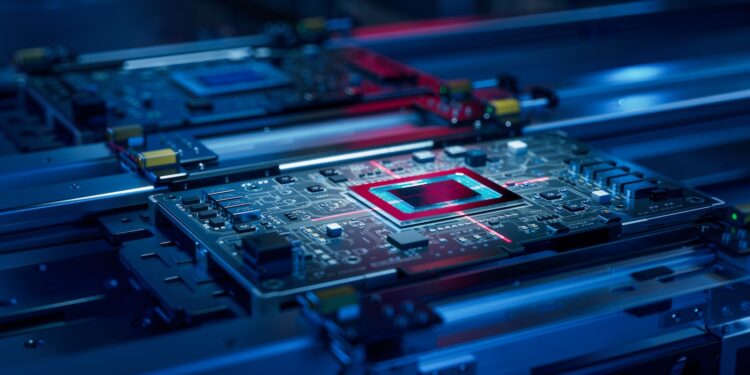Although the iPhone 17 hasn't even been released yet, concrete information about the next generation is already emerging. The iPhone 18—especially the iPhone 18 Pro and iPhone 18 Fold—is expected to feature a completely new chip: the A20. The first details come from well-known analyst Jeff Pu, who described some of the technical innovations in a note to investors. Analyst Ming-Chi Kuo also anticipates similar specifications. This provides a clear early picture of where the next iPhone generation is headed.
If you're interested in Apple's technological developments, the iPhone 18 is a fascinating look. The focus is clearly on the new A20 chip, which is said to be not only more powerful but also fundamentally different from its predecessors. A foldable model – the iPhone 18 Fold – is also apparently in the works. The combination of a new manufacturing process, a different design, and potential advantages such as better battery life or more efficient AI performance makes the A20 chip a key component of the 2026 iPhone.
The A20 chip brings the switch to 2 nm
According to Jeff Pu, the A20 chip, which will be used in the iPhone 18 Pro, iPhone 18 Pro Max, and iPhone 18 Fold, will be manufactured using TSMC's 2-nanometer process. Apple currently uses chips with a 3-nm structure width. The A17 Pro (iPhone 15 Pro) is based on TSMC's first 3-nm generation (N3B), the A18 (iPhone 16) on the second generation (N3E), and the upcoming A19 chip (presumably in the iPhone 17) is said to use the third 3-nm process (N3P). The A20 will mark the first switch to the 2-nm process (TSMC N2). According to previous reports, this should result in up to 15% more performance and up to 30% less power consumption. The smaller manufacturing process allows more transistors to be placed on the same chip, which directly impacts speed and efficiency.
New chip packaging: RAM directly on the wafer
Another unique feature of the A20 chip is the planned chip packaging technology. Jeff Pu assumes that Apple will use TSMC's Wafer-Level Multi-Chip Module (WMCM) for the A20. This means that the RAM will not be installed separately and connected to the main chip via a silicon interlayer, as is currently the case. Instead, the RAM will be packaged directly on the same wafer as the CPU, GPU, and Neural Engine. This change could provide several advantages:
- shorter paths between the chip components
- faster data processing
- lower energy consumption
- better heat distribution
- Space saving in the housing
This last point is especially crucial for a compact device like the iPhone. Reducing the chip's footprint could create more room for other components, such as larger batteries or additional sensors.
The iPhone 18 Fold – Apple's entry into foldable smartphones
In addition to the iPhone 18 Pro and Pro Max, a foldable iPhone 18 Fold is also being discussed. It is also expected to be equipped with the A20 chip. A lot of information about the device itself has already leaked out. Rumors suggest that Apple is placing great emphasis on a robust hinge, a flexible and scratch-resistant display, and a specially adapted iOS interface. The A20 chip, with its new architecture, is likely to play a key role here, ensuring no compromises in performance or efficiency despite the flexible design.
Overview of the chip generations
For a better comparison, here is an overview of the current and expected iPhone chips:
- A17 Pro: 3nm, TSMC N3B (1st Gen 3nm)
- A18: 3nm, TSMC N3E (2nd Gen 3nm)
- A19: 3nm, TSMC N3P (3rd Gen 3nm)
- A20: 2nm, TSMC N2 (1st Gen 2nm)
The nanometer specifications refer to TSMC's marketing terms and are not to be understood as exact physical measurements. Nevertheless, one thing is certain: With the A20, Apple is taking a significant step in chip development.
- visionOS 26 puts an end to half-baked gaming solutions
- iPhone 17: ProMotion not coming to all models after all?
iPhone 18 coming in 2026 – with new chip and more efficiency
The iPhone 18 – especially the Pro and Fold models – will most likely be equipped with the new A20 chip. The combination of 2nm manufacturing and new packaging technology could deliver noticeable performance improvements. This will also include better energy management and more efficient use of the internal space. Anyone interested in Apple's technological advancements should keep an eye on the iPhone 18. The launch is expected in September 2026. Looking for new accessories? Visit our Amazon Storefront – there you'll find a variety of products from leading manufacturers, including HomeKit and more! (Image: Shutterstock / IM Imagery)
- iPhone 18 brings split launch and many advantages
- This is what Apple is planning for the iPhone: Six models per year
- New era for the iPhone: What Apple plans for the next few years
- iPhone Fold: Why Apple's foldable phone is ahead of the competition





